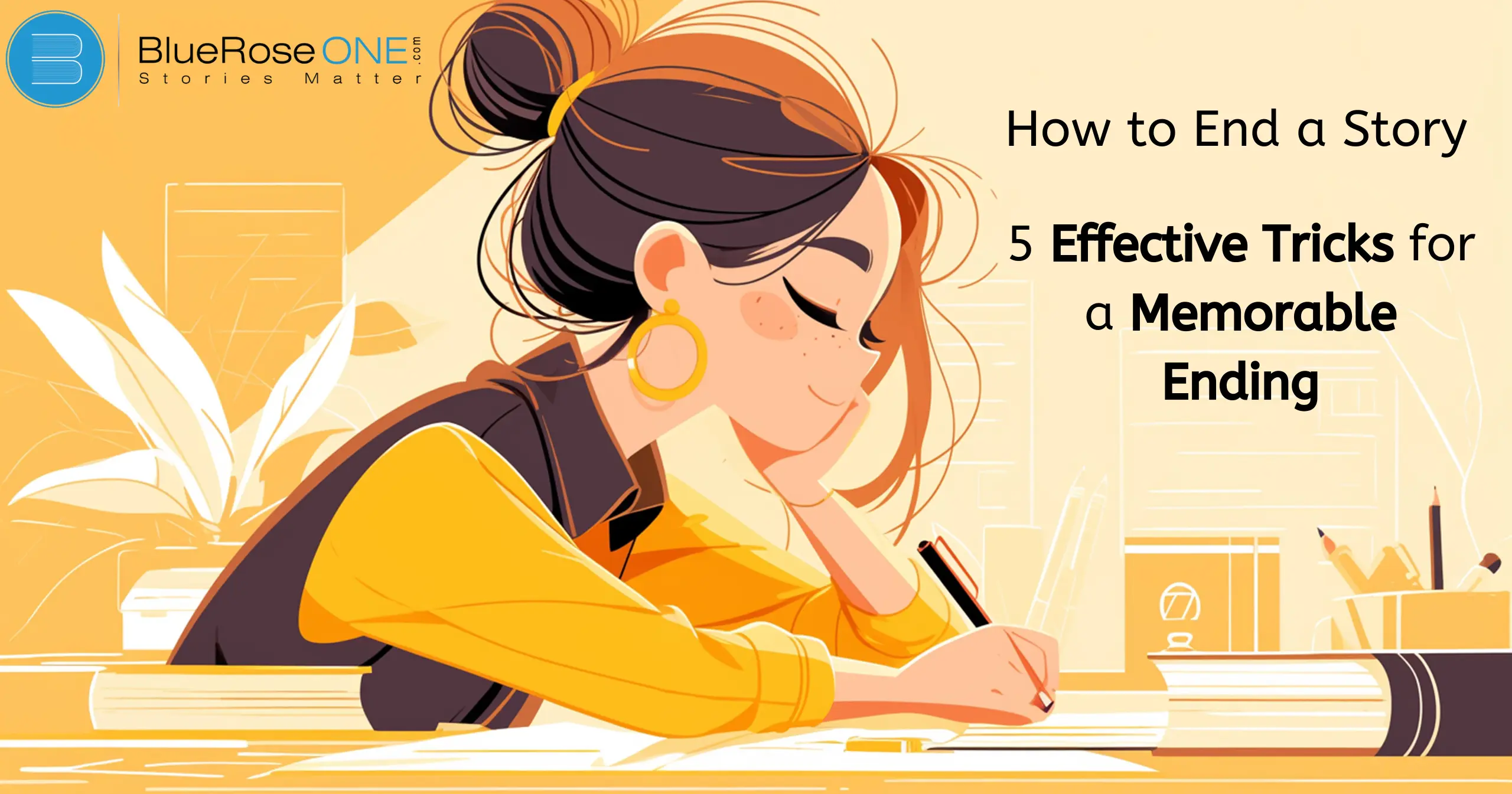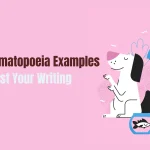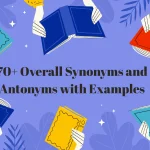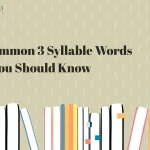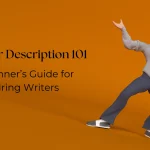Ending a story is like applying the final brushstroke to a canvas; it may make or ruin the entire narrative. A solid ending leaves a lasting effect on readers and connects the story’s threads in a way that is both satisfying and meaningful.
Whether you’re writing a novel, short story, or screenplay, selecting the appropriate strategy for your conclusion is critical. In this lesson, we’ll look at five successful approaches for creating a memorable finale that connects with your audience.
You may also read: Query Letter vs. Cover Letter: What’s the Difference?
1. The Full Circle Ending
What is a Full Circle Ending?
A full circle ending is one that brings the story back to its beginning, creating a sense of closure and completeness. This technique can be particularly powerful, as it often highlights how the protagonist has changed or how the events of the story have come full circle.
Examples in Literature
One classic example of a full circle ending is in George Orwell’s “1984,” where the protagonist‘s journey leads him back to the oppressive regime he initially sought to escape. Another example is in “The Great Gatsby,” where the story returns to the green light, symbolizing Gatsby’s dreams and failures.
You may also like: 5 Act Structure: Definition, Examples and More
How to Implement This Technique
To use a full circle ending, revisit key elements from the beginning of your story. Consider how the protagonist’s journey has evolved and find a way to reflect this change in the conclusion. Ensure that the return to the starting point feels natural and earned.
2. The Twist Ending
Defining a Twist Ending
The unexpected ending is an effective approach for crafting a memorable finish to your story. This strategy surprises the reader by providing an unexpected twist that alters the story’s course or meaning.
To create an effective twist ending, make sure the surprise is both startling and plausible, and that it relates to the story’s themes or plot points. This strategy can leave a lasting effect on readers and prompt thoughtful contemplation, helping your tale stand out.
Famous Twist Endings in Books and Movies
One of the most famous twist endings is in “The Sixth Sense,” where a discovery about Bruce Willis’ character alters the entire plot. Another famous example is “Gone Girl,” in which the twist alters the story’s core conflict.
You may also like: List of Nobel Peace Prize Winners in India
Tips for Crafting an Effective Twist
To create a successful twist, place minor clues throughout the story without revealing the surprise. Ensure that the twist is plausible and consistent with the story’s established aspects. A twist should enhance the overall story rather than feel like an afterthought.
You may also read: How to Create a Character Profile: A Step By Step Instructions
3. The Open-Ended Conclusion
An open-ended finish leaves the plot unsettled, allowing readers to create their own ending. This strategy can be effective because it captures the reader’s imagination and encourages them to reflect deeply on the story’s topics and characters.
By not delivering a clear resolution, the story frequently reflects real-life ambiguities and complexities, making it more memorable and effective. Open endings function best when they relate to the key themes or questions raised throughout the story.
You may alsp read: List of Top 10 Famous Durjoy Dutta Books of All Time
Pros and Cons
The main advantage of an open-ended ending is that it invites readers to engage more deeply with the story. However, it can also leave some readers feeling unsatisfied if they prefer a clear resolution.
Examples and Execution
A well-known example of an open-ended conclusion is in “Inception,” where the spinning top leaves the viewer questioning reality. To execute this technique, carefully consider what aspects of the story can be left open and how to balance ambiguity with closure.
You may also read: How to Publish a Book? | Publish Your Book | BlueRoseOne
4. The Emotional Closure
Emotional closure in a story refers to resolving the character’s emotional journeys by the end. This strategy ensures that readers are satisfied with how the characters have developed or altered.
To attain emotional closure, a story should address the characters’ main difficulties and demonstrate how they overcame or came to terms with them.
This frequently entails resolving personal difficulties, giving meaningful moments, or demonstrating how characters have matured, leaving readers with a sense of closure and fulfillment.
You may also like: Famous Science Fiction Books to Read in 2024
Crafting Emotional Moments
To craft emotional closure, ensure that the story’s themes and character arcs are addressed. Use poignant and resonant moments to provide a satisfying emotional payoff. Examples include the heartfelt reconciliation in “Pride and Prejudice” or the poignant farewell in “The Fault in Our Stars.”
Examples of Emotional Closures
In “To Kill a Mockingbird,” Scout’s reflection on her father’s values and the town’s growth provides emotional closure. Similarly, “The Road” offers a somber yet hopeful ending that resonates with the emotional journey of the characters.
You may also like: Top 10 Types of Novels That Dominate Bestseller Lists
You may also like: Where the Red Fern Grows: Book Summary & Themes
5. The Resolution Ending
What is a Resolution Ending?
A resolution ending is the point in a story when all conflicts and concerns are addressed. It brings closure by addressing the primary issues and revealing the characters’ outcomes.
This style of conclusion ties up loose ends and lets readers understand how the characters’ stories end. A resolution ending is satisfying because it provides a sense of completion by showing the audience the final consequences of the characters’ actions and decisions.
Examples of Effective Resolutions
An example of a resolution ending is in “Harry Potter and the Deathly Hallows,” where the final confrontation resolves the series-long conflict. Another example is “The Lord of the Rings,” where the destruction of the Ring provides a clear and satisfying conclusion.
You may also read: How to Publish a Book? | Publish Your Book | BlueRoseOne
How to Write a Satisfying Resolution
To write a satisfying resolution, ensure that all major conflicts are resolved and that the story’s loose ends are tied up. Address the protagonist’s journey and provide a sense of closure that reflects the story’s themes and tone.
Choosing the Right Ending for Your Story
The genre, tone, and themes of your work all influence the choice of an appropriate ending. Consider what style of conclusion will best suit your story and appeal to your audience. Consider your characters’ journey and what type of finale would deliver the most meaningful payoff.
Tips for Writing a Memorable Conclusion
Importance of Revising the Ending
Revising the ending of your tale is critical because it influences the reader’s overall perception. A solid ending connects major themes and delivers a satisfying conclusion to the story.
It guarantees that the story feels full and has a lasting impact on readers. Revising allows you to improve the conclusion, making it more dramatic and memorable. By carefully creating your ending, you may improve the overall quality of your tale and leave an impression on your audience.
Seeking Feedback
Getting input on your story’s ending is critical. Share your draft with trustworthy friends, writers, or editors, and solicit their honest feedback. They can provide vital insights into whether the finish is satisfying and effectively concludes the story.
Their opinions can help you discover any flaws or places for development, ensuring that your conclusion resonates with readers and creates a lasting impact.
Conclusion
Making a great finish is critical for creating a lasting impact with your readers. Whether you opt for a full circle ending, a twist, an open-ended finale, emotional closure, or a resolution, the goal is to ensure that your ending is consistent with the themes and tone of your narrative. You can achieve a fulfilling and effective conclusion by experimenting with various strategies and considering the influence on your audience.

